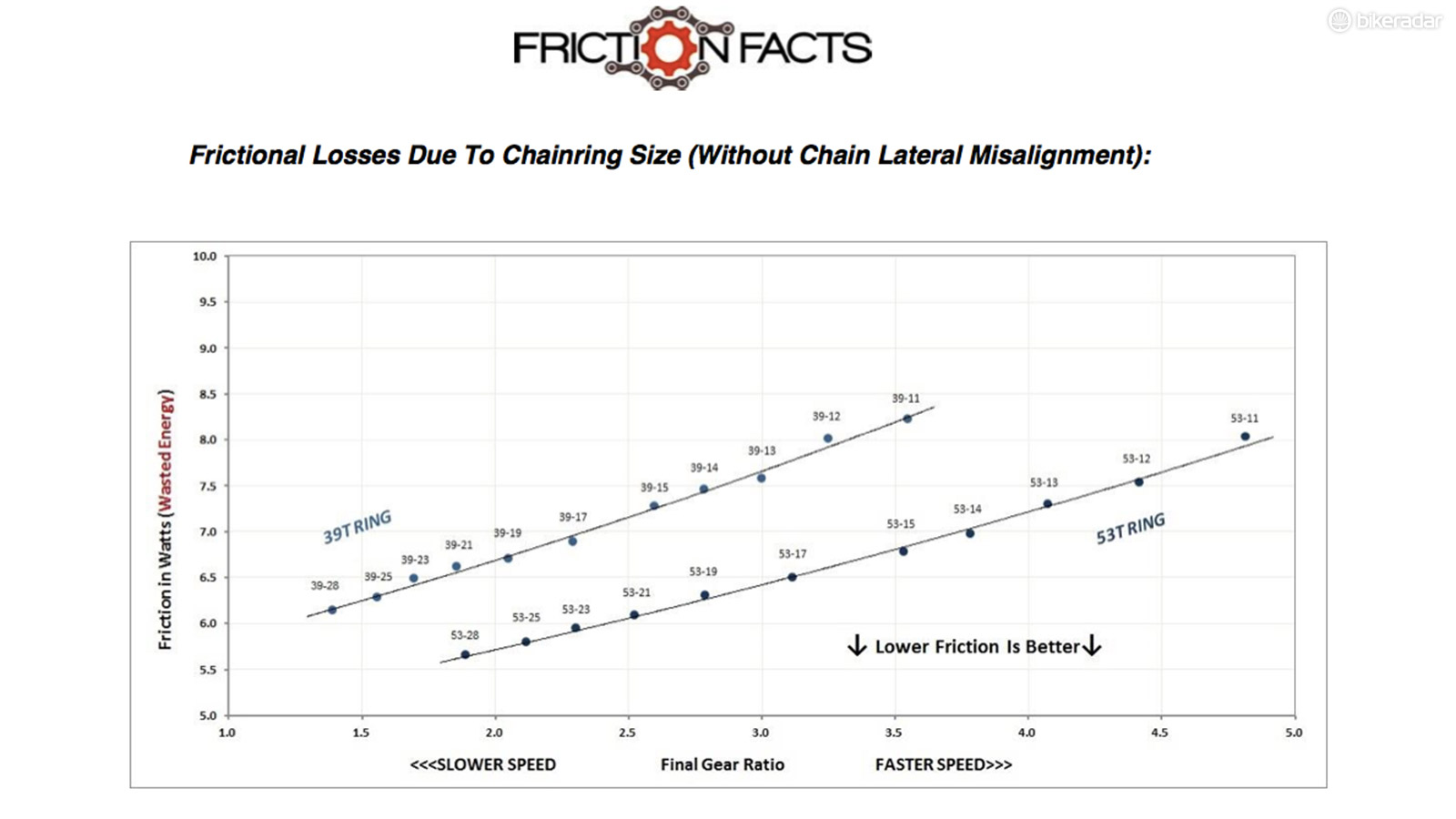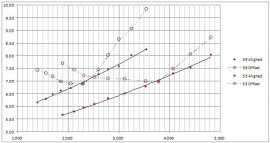this graph shows the measured efficiency of various gear combinations in the absence of chain misalignment, for 53-39 chainrings and 11-28 11s cassette. The middle sprocket (#6) in this cassette is 17T.

I.e. the chainwheel was deliberately perfectly aligned with the relevant sprocket for each test. These losses are primarily 'chordal' losses, i.e. they vary with the size (number of teeth) of the chainwheel and sprocket. You can see that for any given gear ratio you are better off by 1-1.5W using the bigger chainring and the relevant sprocket, whenever this is possible. It is expected that with a 'compact double' the difference seen would be greater.
However once you factor in the chain line seen in the actual setup on a bike the data looks different (apologies for the small scale of the image, it was the only one I could find on the internet, but you can still see what is going on)

This graph shows the original data together with two 'V' shaped plots with data obtained with the cross-chaining set as it would be found on the bike. You can see that the cross-chaining losses add to the chordal losses so that you can be up to 2W worse off in any one gear combination. In fact the cross-chaining losses are a much stronger effect than the difference between the chordal losses in the data seen, such that you are better off with a better aligned small chainring-small sprocket combination than a larger chainwheel-sprocket combination that is badly aligned.
The takeaway from this is that if you want the best efficiency in this setup, you should choose sprocket-chainring combinations such that
a) the smallest sprocket you should ever use on the small chainring is 17T; any smaller than that and there is a better gear ratio (of similar size in gear inches) using the large chainring. This allows you the six largest sprockets and forbids the smallest five.
b) the largest sprocket you should use on the big ring is 21T. This allows you the smallest eight sprockets and forbids the largest three.
So if you were to choose on the basis of chainline alone, you might forbid four of the sprockets leaving you with seven permissible ones per chainring, but with these measurements the data suggests that you would be better off using one extra gear on the big ring than that.

If cross-chaining were really 'harmless' then you would expect chordal losses to dominate such that (say) you would always be better off on the big ring, regardless of chainline: it just ain't so.
Note that the worst chainline permitted in this 2x11 setup is not as bad as the chainline encountered in a 1x11 or 1x12 setup. Also note that if you wanted to make the least efficient transmission possible in the higher gear ratios, you would choose a small chainring, small sprocket (eg a 10T), and a bad chainline. This is
exactly what you get with a 1x setup.....

To rub salt into the wounds the smaller chainring/sprocket combinations always wear faster, especially if you are dishing out a fair amount of power. If you routinely cross-chain the usual result is that the chain wears a lot faster than normal; often the shift quality goes down the pan because the chain becomes so worn and laterally flexible it can no longer be pushed around by the RD.
SRAM can bleat all they want about cross-chaining 'being harmless' but it just ain't so.
cheers


